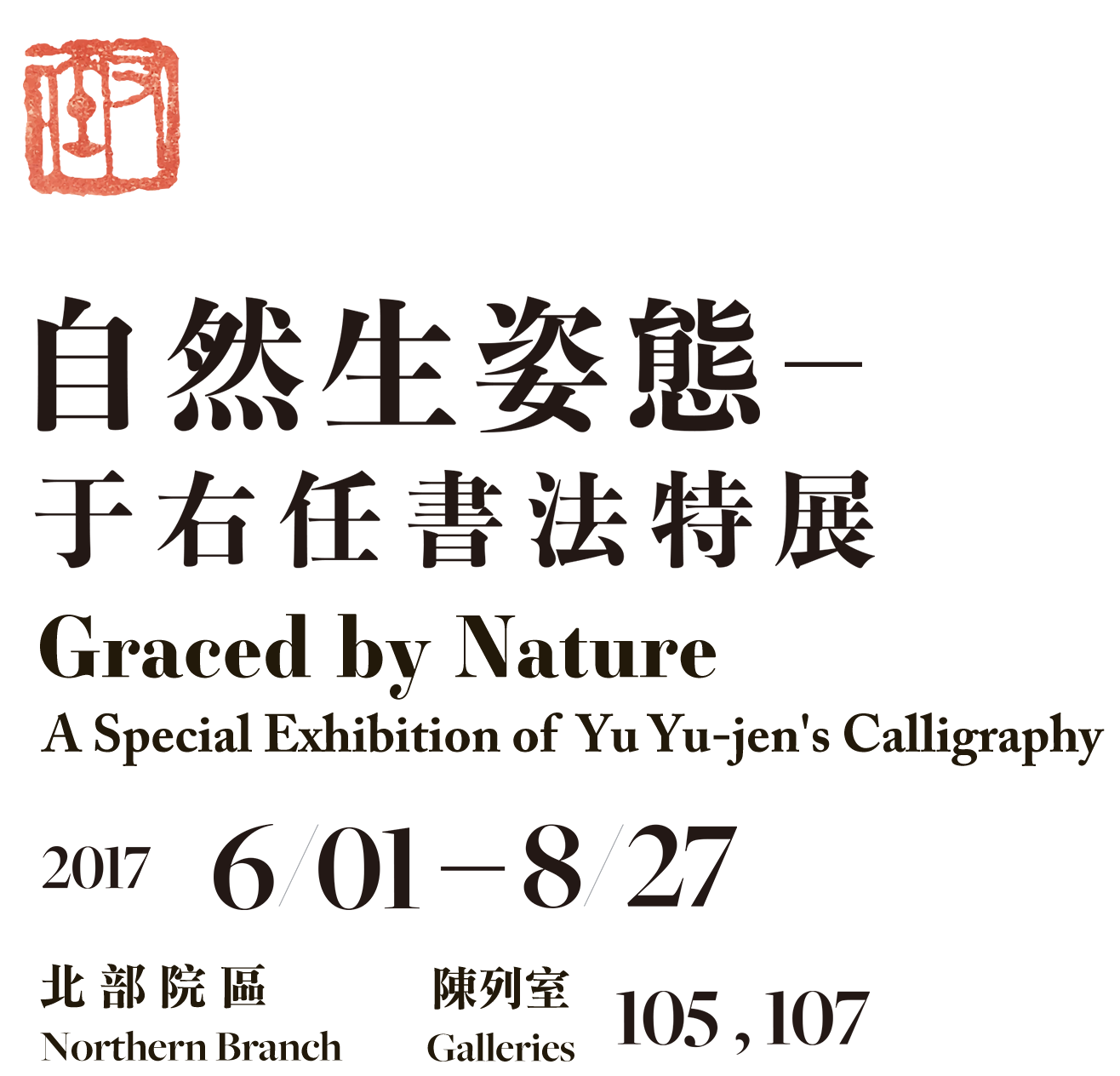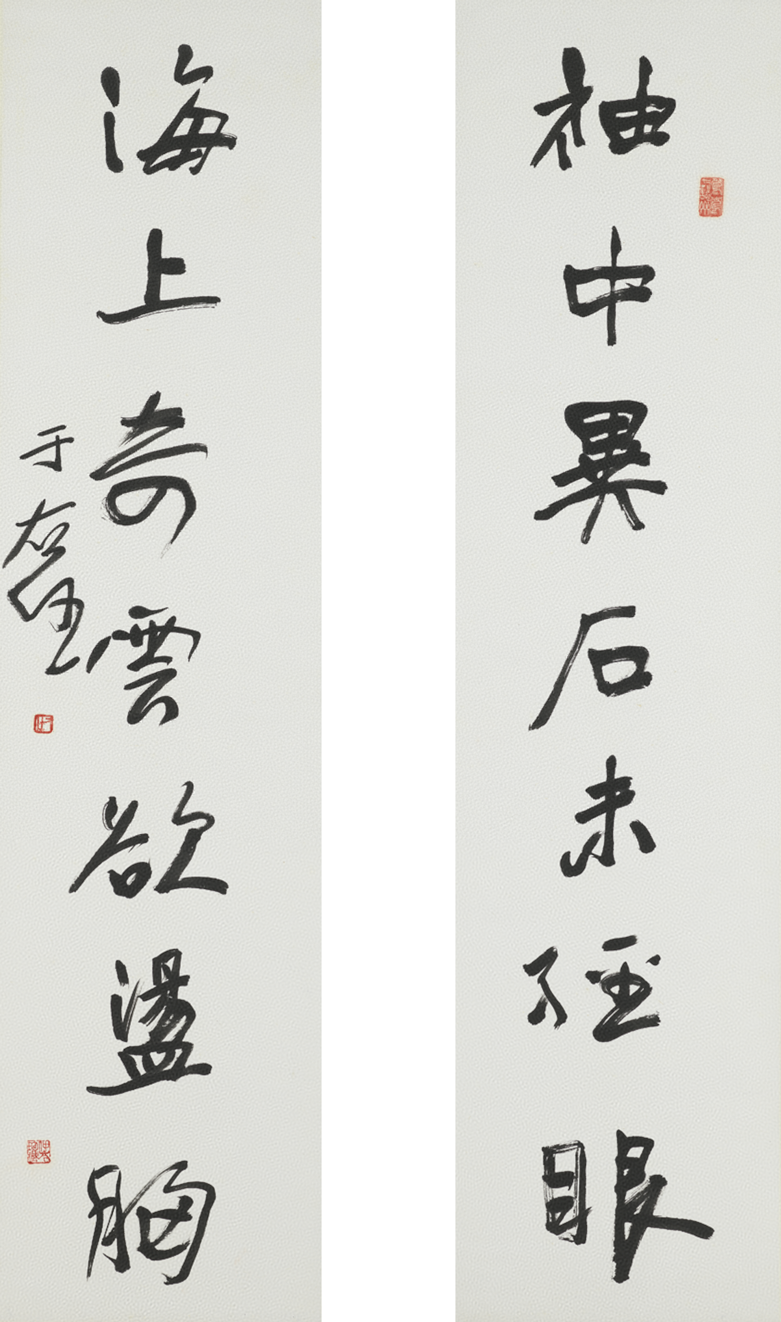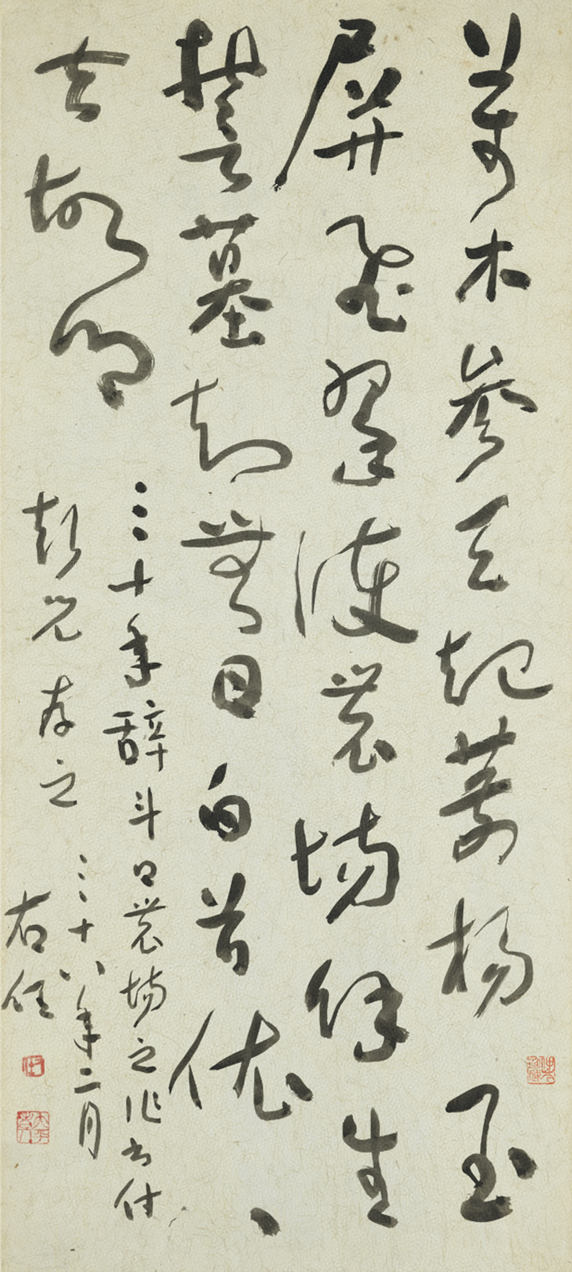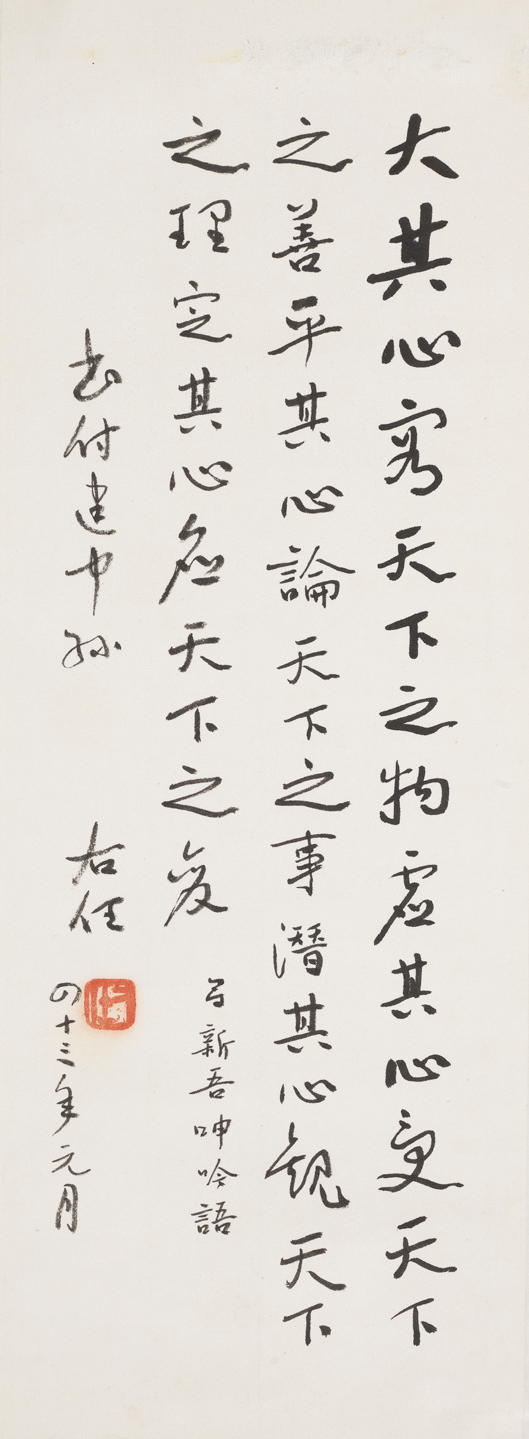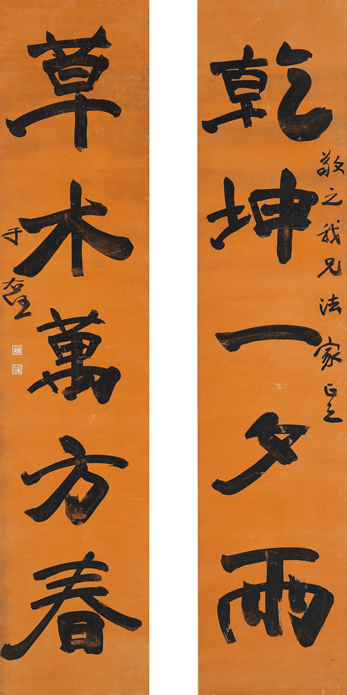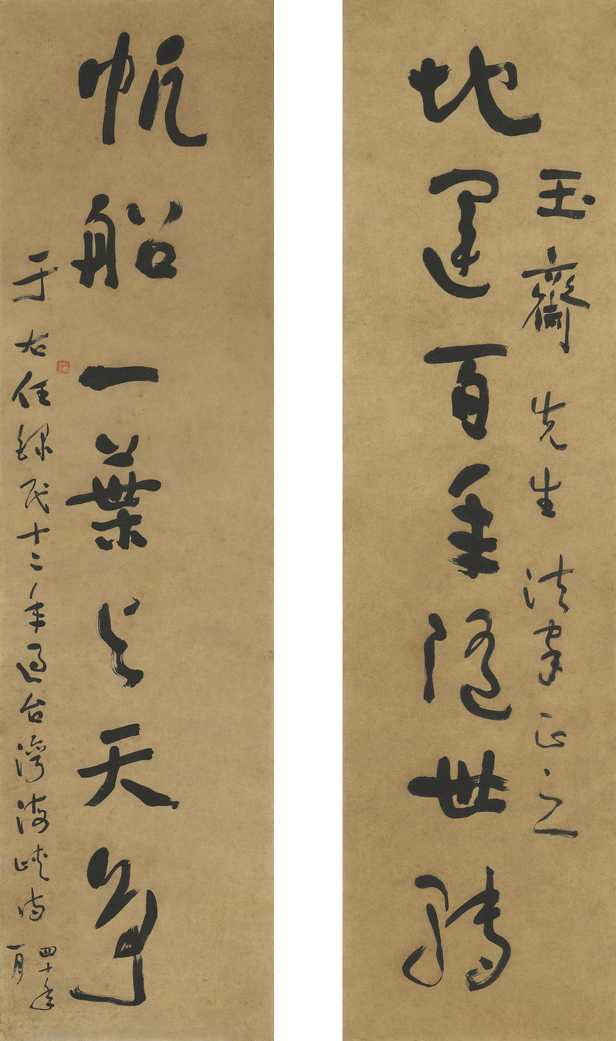Yu Yu-jen's achievements in calligraphy are universally recognized by many today. And with his extensive contacts over the years and requests for his calligraphy, the result is a large number of surviving works. The contents of Yu's works include ancient classics, sayings of Chinese and Western philosophers, and his own writings. Yu was cultivated and learned in classical literature, and his pieces are often full of revolutionary ideas connected to the changing times in which he lived. A member of the Southern Society, a literary group advocating revolution, he also closely associated with scholarly circles in Taiwan after arriving on the island.
Many public and private groups likewise invited Yu Yu-jen to write plaques, signs, and couplets for them, and many are still extant. In the face of requests from people of different backgrounds and relation to him, Yu often took into consideration the contents and even the type of paper and brush to use. This section of the exhibit takes five donors of Yu's works as an example, presenting them from the perspective of relationships and materials in Yu's writing, hopefully achieving a deeper understanding of his works in the process.
